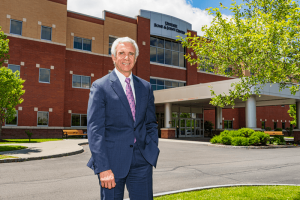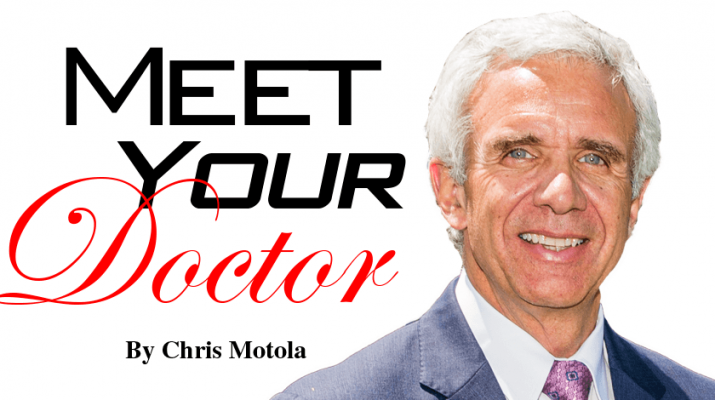SUNY Upstate orthopedic surgeon discusses his role as the new president of Pediatric Orthopedic Society of North America
By Chris Motola

Q: You’ve been elected president of the Pediatric Orthopedic Society of North America (POSNA).
A: Yes, it’s a one-year term.
Q: What does POSNA do?
A: Most full-time practicing pediatric orthopedists in the United States and Canada are members of POSNA. Our mission is to improve the care of children with musculoskeletal disorders through education, research, and advocacy. We support research grants. We provide educational services to our members. We run two major scientific meetings each year where a lot of original research is presenting and members can get hands-on experience. We have alliances with other pediatric orthopedic societies throughout the world.
Q: I think people are generally aware that organizations like yours exist, but there’s not a great sense of, say, how they are organized or how often they meet. What kind of commitment are they for members?
A: For a general member, they have the opportunity to attend our annual meeting and other major education programs. They also have the opportunity to participate in our online education. If you’re a member of the board of directors, you meet four times a year in person, plus some conference calls in addition to that.
Q: What kinds of educational programs do you offer and how do they work around physicians’ schedules?
A: If you go to our website, there are a lot of educational offerings right on there. There’s a section for patients, with a description of common conditions written more in layperson terms. There are also resources for practicing physicians like online videos about surgical techniques. Curriculum for educating pediatric orthopedists. We also host webinars, which provide an opportunity for live interaction. There are tutorials where physicians can go to remote sites to get some hands-on experience as well.
Q: When we’re talking about pediatric orthopedics, what kinds of conditions are we talking about?
A: Pediatric orthopedics is unique. When you look at adult orthopedics, it’s usually broken down into very specific areas like spine, hands; pediatric orthopedics cover the whole range. Now it’s true you’re starting to see sub-specializations arise within pediatric orthopedics, but they’re less common. There are a lot of muscoskeletal systems that affect children starting with alignment issues, hip development issues, scoliosis. We do a lot of trauma management. The big difference compared to adult orthopedics is that you’re also dealing with developmental issues.
Q: What are some examples?
A: Children born with congenital disorders. Things like club feet. Hip dislocations. Leg length inequalities. Those are some basic types of things.
Q: How does running the society change the way you approach your practice?
A: Certainly it takes some time away from practice, but it’s a relatively short-term position. It helps advance the well-being of the profession, so I think it’s worth it to give back. I try to make adjustments to my practice so that it’s manageable.
Q: What kind of impact do you feel like organizations like POSNA have on the industry?
A: The greatest impact has to do with sharing information and advancing the science of the specialty, as well as teaching providers who may not have the resources that we have.
Q: Since it’s a continental organization, how do you navigate the differences between systems?
A: We don’t get as involved in the politics of medical care. We do have some role in advocacy on behalf of children in both the Canadian and United States systems.
Q: Since your patients are children, does that make advocacy more difficult?
A: I think it’s different and does require different approaches, no doubt about that. The impact of growth on the musculoskeletal system over time is something we have to take into consideration.
Q: How do you reach out to younger orthopedic surgeons?
A: After you finish medical school, you enter a five-year orthopedic surgery residency. Then most people then enter a one-year fellowship. Pediatric orthopedics is one of those subspecialty areas. Then, over the course of that fellowship, they usually become aware of our society and, in general, want to be part of it. Now, to be a member of our society, at least 75% of your practice needs to be dedicated to pediatric orthopedics.
Q: Is membership pretty consistent year-to-year?
A: Our society has been growing. We’ve seen kind of a steady growth. Some of our members are retired, and many of them are less involved, but a number remain involved with the educational aspect.
Lifelines
Name: Stephen Albanese, M.D.
Position: Chairman of the department of orthopedic surgery at SUNY Upstate; president of the Pediatric Orthopedic Society of North America
Hometown: Canastota
Education: SUNY Buffalo Medical School; residency at SUNY Upstate; Fellowship at The Hospital for Sick Children, Toronto Canada
Affiliations: SUNY Upstate University Hospital; Crouse Hospital
Organizations: Pediatric Orthopedic Society of North America; American Academy of Orthopedic Surgeons; Scoliosis Research Society; American Orthopedic Association
Family: Wife Eileen, and two sons, Matthew and Kevin
Hobbies: Golf, skiing, cycling
In the News
Physician Stephen Albanese, professor and chairman of the department of orthopedic surgery at Upstate Medical University, has recently been elected president of the Pediatric Orthopaedic Society of North America. POSNA is a professional society of more than 1,400 surgeons, physicians and allied health professionals dedicated to improving the care of children with musculoskeletal disorders.
Albanese has been a member at large on the on the American Academy Orthopaedic Surgeons (AAOS) board of directors (2002-2004). He served seven years (2005-2012) on the Accreditation Council for Graduate Medical Education (ACGME) Orthopaedic Surgery Residency Review Committee (RRC) and was chairman for the final three years. He served a six-year term (2012-2018) on the ACGME board of directors and chaired the Program Requirements Committee (2016-2018). During his 10-year term (2007-2017) on the American Board of Orthopaedic Surgery board of directors, he chaired the Oral Examination Committee (2010-2012) and served as president (2013-2014). ABOS is the national certifying body for orthopedic surgeons.
Albanese has been department chairman and residency program director at Upstate since 2000. He received his undergraduate degree in electrical engineering from Bucknell University and his medical degree from SUNY Buffalo College of Medicine. He completed an orthopedic surgery residency at SUNY Upstate Medical University and pediatric orthopedic surgery fellowship at the Hospital for Sick Children in Toronto, Ontario.

